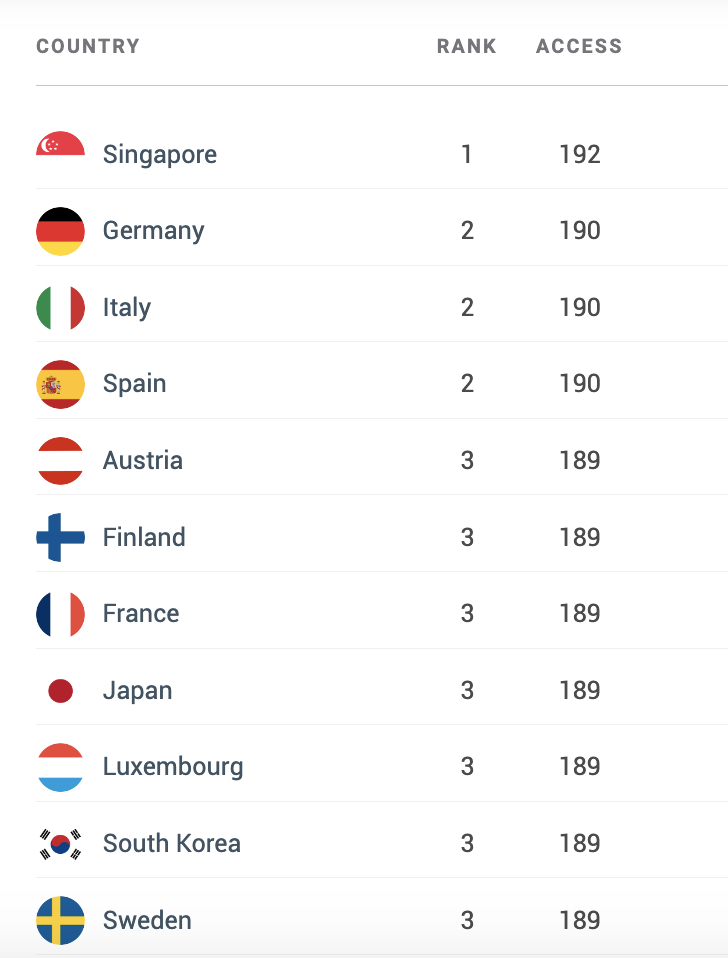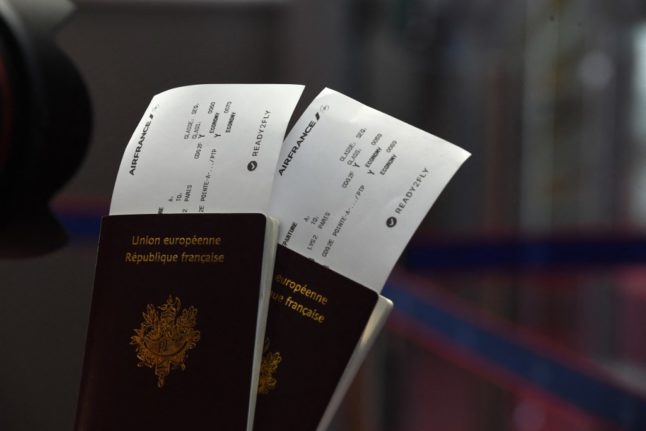The 2023 Henley Passport Index placed France alongside Austria, Finland, Luxembourg, South Korea, Sweden, and Japan – last year’s top-ranked passport – in joint third position its list of the world’s most powerful passports.
European neighbours Germany, Italy, and Spain were joint second on the 18th annual index – their passports allowing visa-free access to 190 other countries.
A Singapore passport, meanwhile, is out on its own as the world’s most access-friendly, guaranteeing visa-free travel to 192 other countries, out of a total of 227.

A French passport not only allows visa-free travel to 189 countries, but also grants EU freedom of movement to its holders – meaning that you can live and work in any of the 27 EU member states without needing a residency permit or visa.
France allows dual nationality, meaning there is in most cases no need to give up your original passport, and is relatively generous in granting nationality to foreigners – you can qualify for French citizenship after five years of residence (or two years if you completed higher education in France) or after four years of marriage to a French person.
The fee for citizenship is a very reasonable €55 – although in practice most people spend at least a couple of hundred euro once you factor in getting certified translations of documents and taking a French exam.
On average, the application process takes between 18 months and two years.
READ ALSO The ultimate guide to getting French citizenship
Other rankings
Irish and UK passports, meanwhile, came in fourth on the list, alongside Denmark and Netherlands. A total 188 countries allow easy travel to holders of these nations’ passports.
New Zealand (187 nations) is fifth on the list, with Belgium, Czech Republic, Malta, Norway, Portugal and Switzerland. One place lower, Australian passports (186 nations) allow visa-free access to the same number of countries as Hungary and Poland.
Canada – and Greece – have the next ‘most powerful’ passports, allowing access to 185 countries without the need for a visa; one place ahead of USA, which opens borders to 184 nations, the same as Lithuania.
As recently as 2014, UK and US passports allowed holders more visa-free travel to more countries than any other nations’ travel documents. Over that period, the US has added just 12 additional destinations to its non-visa travel list, compared to the 25 added by current top passport Singapore. A UK passport, meanwhile, jumped two places on the list compared to last year, to arrive at its highest ranking since 2017.
Furthermore, while a US passport allows holders to travel to 184 destinations without a visa, only 44 countries’ passports are allowed across its borders without a visa, putting the land of the free 78th on the Henley Openness Index of welcoming countries. Australia, Canada, New Zealand and Japan make up the Top 5 countries with the biggest difference between the travel freedom they enjoy versus the visa-free access they provide to other nationalities.
Top 10 ‘most powerful’ passports:
1 (visa-free travel to 192 nations)
Singapore
2= (190 nations)
Germany
Italy
Spain
3= (189 nations)
Austria
Finland
France
Japan
Luxembourg
South Korea
Sweden
4= (188 nations)
Denmark
Ireland
Netherlands
United Kingdom
5= (187 nations)
Belgium
Czech Republic
Malta
New Zealand
Norway
Portugal
Switzerland
6= (186 nations)
Australia
Hungary
Poland
7= (185 nations)
Canada
Greece
8= (184 nations)
Lithuania
United States
9= (183 nations)
Latvia
Slovakia
Slovenia
10= (182 nations)
Estonia
Iceland



 Please whitelist us to continue reading.
Please whitelist us to continue reading.
Member comments